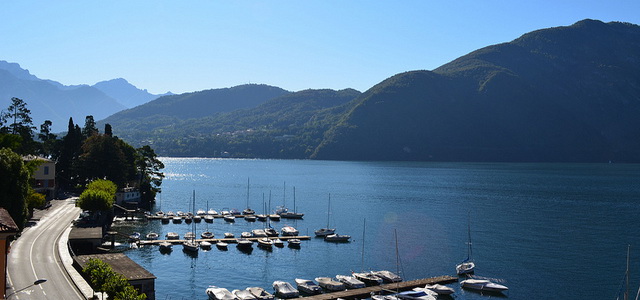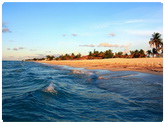| Quick Facts: | Lake Como |
|---|---|
| Countries: | Italy Switzerland |
| Alternative names: | italian: Lago di Como |
| Max. length: | 46 km |
| Max width: | 4.5 km |
| Surface area: | 146 km² |
| Avg. Depth: | 154 m |
| Max. depth: | 425 m |
| Water volume: | 22.5 km³ |
| Surface elevation: | 198 m |
| Primary inflows: | Adda River Mera River |
| Primary outflows: | Adda River |
Lake Como, or Lago di Como in Italian, is a large lake in northern Italy in the southern portion of the Alps of Lombardy. It is glacial in origin, with a characteristically steep profile and great depth (1,350 feet, or 410 meters, at the deepest point). Lake Como resembles a Y turned upside down: the northern part is referred to as Lake Colico, the southwestern as Lake Como, and the southeastern as Lake Lecco, after the principal towns situated on these branches.
Lake Como Tourism
The lake is so well protected by the surrounding arc of the Alps that its climate resembles that of the Italian Riviera. Como is noted for its relatively warm waters; even at midwinter the water temperatures remain between 41° and 44° F (5° and 7° C).
Olive, laurel, and even palm trees and the agave thrive in the open. Since Roman times the sheltered shores of thelake have provided popular resort sites. There is also a local fishing industry.
The two principal cities on Lake Como are situated on its southern branches. Como, in the southwest, is an important industrial center and port of entry for rail and road traffic from Switzerland. It has a silk-weaving industry of long standing.
The beautiful marble cathedral, built in the 14th to 18th century, fuses Gothic and Renaissance styles. There is also a town hall (Broletto) completed in 1215. Lecco, in the southeast, is also a manufacturing town, located on the lake shore beneath the jagged ridge of the Monte Resegone.
Of the many resort centers, the best known and possibly most beautiful are Menaggio, near the point where the lake divides into two branches, and Bellagio, on the tip of the peninsula that separates the two branches. Near Dongo, close to the northern end of the lake, the dictator Benito Mussolini was taken prisoner by Italian partisans while attempting to flee to Switzerland. He was subsequently executed there in April 1945.





